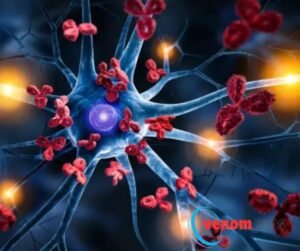
The Science of Poisons: How Toxicologists Detect and Neutralize Harmful Substances

Toxicology is the science of poisons, studying how chemicals and substances can harm living organisms. Toxicologists, the experts in this field, play a crucial role in safeguarding human health and the environment. Their work involves detecting, evaluating, and neutralizing potentially harmful substances. Toxicology sits at the intersection of chemistry, biology, and medicine, bridging these fields to assess risk and devise strategies to mitigate the dangers posed by toxic substances in Toxicologists Detect.
Understanding Poisons: A Complex Challenge
Poisons, or toxins, are substances that can cause harm when ingested, inhaled, or absorbed through the skin. Toxicology, as a discipline, investigates these chemicals, which can range from naturally occurring substances like snake venom to synthetic compounds such as pesticides and industrial chemicals. Every toxin has unique properties, and its effects depend on various factors, including dose, duration of exposure, and the individual’s health condition. A key principle in toxicology is the dose-response relationship, which states that “the dose makes the poison.” Even water can be toxic in excessive amounts, while certain deadly substances, such as botulinum toxin (used in Botox), can be therapeutic in minute doses in Toxicologists Detect.
Toxicologists are responsible for understanding this relationship to determine safe exposure levels. They study how poisons interact with cells, organs, and bodily systems to cause adverse effects. This process involves identifying the pathways through which toxins enter the body and how they are metabolized and eliminated. These factors influence a poison’s potency and the severity of its effects in Toxicologists Detect.

Detecting Poisons: Modern Methods
Detecting poisons in the human body or environment requires a combination of sophisticated techniques. Toxicologists utilize a range of tools to identify and measure the presence of toxic substances.
Analytical Chemistry: Modern toxicologists use techniques like gas chromatography-mass spectrometry (GC-MS) and liquid chromatography-tandem mass spectrometry (LC-MS/MS) to detect toxins at minute concentrations. These methods allow the separation, identification, and quantification of chemicals in biological samples, such as blood, urine, or tissue, or environmental samples like soil and water in Toxicologists Detect.
Biomonitoring: By measuring the levels of toxins or their metabolites in biological samples, toxicologists can assess the extent of exposure in humans or animals. This approach is valuable in occupational settings, where workers may be exposed to hazardous substances over long periods.
Forensic Toxicology: In cases of poisoning or drug overdose, forensic toxicologists are called upon to determine the cause of death or injury. They analyze post-mortem tissues and fluids, looking for toxic agents, and interpret their findings in the context of the case. This branch of toxicology requires an understanding of both pharmacology and pathology.
Environmental Monitoring: Toxicologists also play a key role in monitoring environmental pollution. By analyzing air, water, and soil samples, they can detect harmful substances that might affect ecosystems or human populations. This monitoring is crucial for regulatory agencies in assessing compliance with environmental laws in Toxicologists Detect.

Neutralizing Poisons: Treatment and Prevention
Once a toxic substance is identified, toxicologists work to neutralize its effects. This process typically involves both immediate medical intervention for individuals exposed to the poison and long-term strategies to prevent future exposure.
Antidotes: In some cases, specific antidotes can neutralize poisons or block their harmful effects. For example, naloxone is used to reverse opioid overdoses by blocking opioid receptors in the brain, while atropine can counteract the effects of certain nerve agents. However, not all poisons have antidotes, and treatment often focuses on supporting the body’s natural detoxification processes.
Chelation Therapy: In cases of heavy metal poisoning, such as lead or mercury, chelating agents are used to bind the metals and facilitate their excretion from the body. This therapy helps reduce the toxic load and prevent further damage to organs.
Activated Charcoal: For ingested poisons, activated charcoal is often used in emergency settings to absorb toxins in the gastrointestinal tract, preventing their absorption into the bloodstream. While not effective for all poisons, it is a valuable first-line treatment for many types of poisoning.
Supportive Care: Many poisons affect critical organs, such as the liver, kidneys, or lungs. In such cases, supportive care, such as intravenous fluids, dialysis, or mechanical ventilation, may be necessary to maintain vital functions while the body processes and eliminates the toxin.
Public Health Measures: Beyond treating individual cases, toxicologists are involved in designing public health interventions to prevent toxic exposures. This work includes establishing safety guidelines for chemical use, advocating for the removal of harmful substances from consumer products, and developing educational programs to raise awareness about poison risks in Toxicologists Detect.

The Role of Risk Assessment
One of the most critical functions of toxicologists is conducting risk assessments. This process involves evaluating the likelihood that a chemical will cause harm under specific conditions. Toxicologists assess the toxicity of a substance, how it is used, and the potential for exposure to develop safety standards and regulations in Toxicologists Detect.
For example, the Environmental Protection Agency (EPA) and the Food and Drug Administration (FDA) rely on toxicologists to establish limits for pesticide residues in food or acceptable levels of contaminants in drinking water. By balancing the potential benefits of a chemical (such as its use in agriculture or industry) against its risks, toxicologists help ensure that products and practices are safe for both humans and the environment in Toxicologists Detect.
Emerging Challenges in Toxicology
While the field of toxicology has advanced significantly, new challenges continue to emerge. The increasing complexity of synthetic chemicals and the rise of nanotechnology, for instance, present new unknowns about how these substances interact with living organisms. Additionally, climate change is exacerbating environmental pollution, and toxicologists are tasked with studying how shifting ecosystems affect toxin behavior and distribution in Toxicologists Detect.
Another emerging area is “toxicogenomics,” which studies how genetic variations influence an individual’s response to toxic substances. This field holds promise for personalized medicine, where a person’s genetic makeup could guide safer drug dosing or predict susceptibility to environmental toxins in Toxicologists Detect.

Conclusion
Toxicologists are the unsung heroes in the battle against poisons. Their work in detecting, assessing, and neutralizing harmful substances is essential for protecting public health and the environment. By leveraging cutting-edge technology and scientific expertise in Toxicologists Detect.
Also read this;>“Venom in Your Fruit Basket? The Surprising Truth Behind Toxic Fruits”
Also read this;>High Stakes and Glitter: Casino Royale






